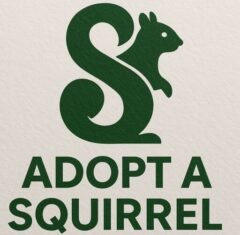Best Tools for Feeding Adopted Squirrels
Everything you need to feed your squirrel safely and effectively
Feeding a baby or young squirrel isn’t just about choosing the right formula it’s also about using the correct feeding tools in the safest and most squirrel-friendly way possible. Whether you’re caring for a newborn squirrel or helping a weaning juvenile transition to solid foods, your choice of feeding supplies plays a major role in the animal’s health and survival.
From syringe sizes to the shape of feeding nipples, every tool you use should support safe feeding habits and reduce the risks of common complications like aspiration (fluid entering the lungs), digestive discomfort, bloat, diarrhea, or even long-term dental damage. These risks are especially high in younger squirrels who have not yet developed full control over swallowing or chewing.
At Adopt a Squirrel Now, we understand how overwhelming feeding can be for first-time caregivers, which is why we’ve compiled this guide based on experience, research, and proven care methods. Our goal is to help you feel confident while raising your squirrel from infancy to independence.
In this section, you’ll learn about the most recommended syringes, nipples, and feeding techniques. We’ll also explain how to recognize whether your tools are helping or harming and how to adjust your setup to ensure every feeding session is safe, calm, and effective.
Whether you’re bottle-feeding a tame baby squirrel at home or transitioning your young one to solids, the right tools make all the difference. Keep reading to discover our top equipment picks and expert care tips tailored to adopted squirrels living in domestic environments.
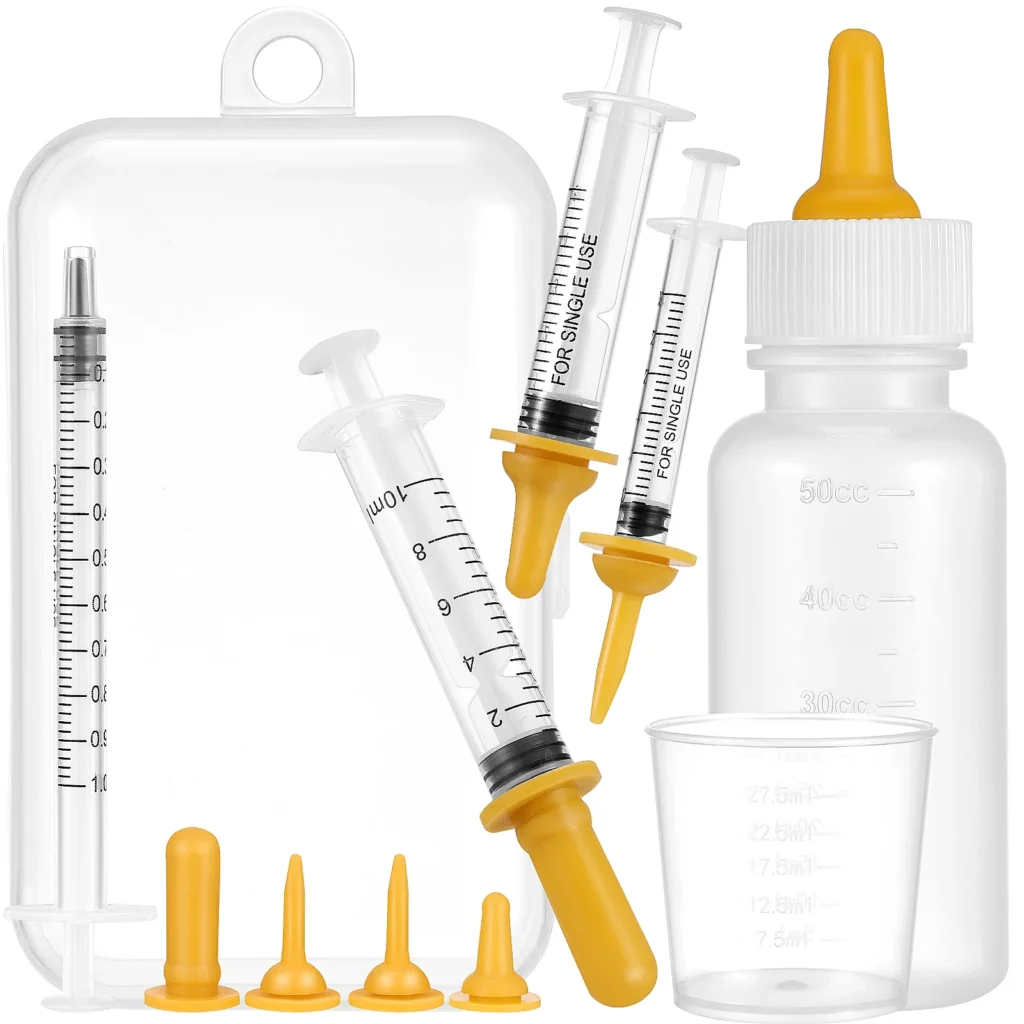
Syringes for Feeding
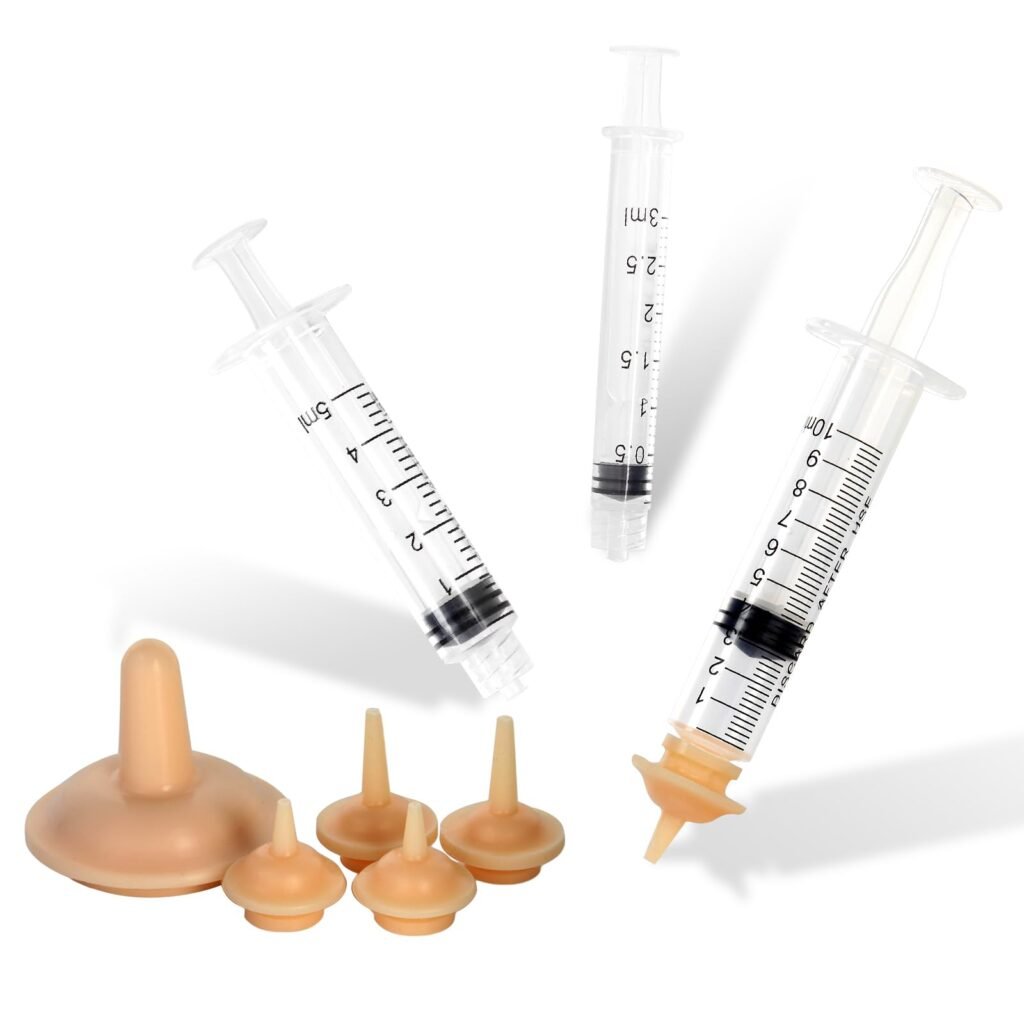
Syringes allow precise control over feeding speed and quantity, which is vital for small or developing squirrels. Here’s what to look for:
- Start Small: Begin with a 1cc syringe for newborns or small squirrels. These give you the best flow control.
- Scale Up Gradually: As your squirrel grows, you can transition to 3cc, 5cc, and eventually 10cc syringes.
- O-Ring Syringes: These offer smoother operation and don’t stick, making them ideal for regular use.
- Slip Tip vs Leur Lock:
- Slip Tip syringes work well with most soft nipples or cannulas.
- Leur Lock syringes are best if you’re using sturdier nipples like the 2 oz nurser type or elongated designs.
Even in a pinch, feeding with a syringe (no nipple) or a dropper is better than using an improper tool but always aim to upgrade as soon as possible.
Nipples
Not all nipples come pre-cut many require manual preparation. Here’s how to use them correctly:
- Cutting the Hole: You can use a hot needle to pierce a small hole, or use sharp scissors to create a crosscut (X or Y shape).
- Test the Flow: Turn the bottle or syringe upside down. The formula should slowly drip out. If it flows too fast, the hole is too large.
- Avoid Hard Tips: Some squirrels dislike hard or oddly shaped nipples, which can lead to feeding refusal or long-term dental issues.
🧠 Did you know? Improper nipple use can lead to malocclusion, a deadly condition where the squirrel’s teeth grow misaligned and uncontrollably. This is why soft, flexible nipples and proper oral support are essential.
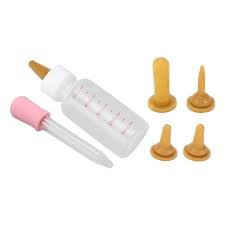
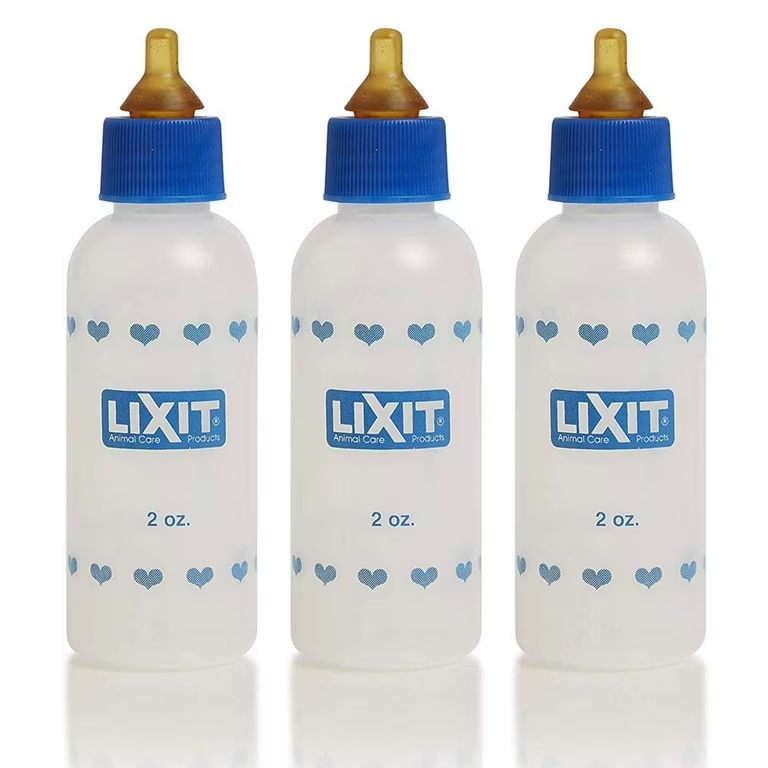
Caution About Bottles
Nurser bottles, while popular in pet stores, are often not ideal especially for young or small squirrels. They can:
- Release formula too quickly
- Increase the risk of aspiration pneumonia
- Be harder to control compared to syringes
However, bottles may work well for older or weaning squirrels under careful supervision.
Recommended Feeding Supplies
If you’re looking to stock up on squirrel feeding tools, here are trusted brands commonly used by squirrel caregivers:
- Chris’ Squirrels & More – Specialized supplies for squirrel care
- The Squirrel Store – Offers a variety of feeding tools, cages, and enrichment
- Henry’s Healthy Pet Foods – Known for high-quality rodent blocks and accessories
- Fox Valley Animal Nutrition – Formulas and feeding kits designed for small wildlife
These stores typically stock everything from syringes to squirrel-safe nipples and supplemental formulas. When shopping, prioritize tools labeled for use with small mammals or rodents.
Final Tip
Feeding time is not only about nourishment it’s also a moment of bonding. With the right setup and proper tools, you’ll ensure your squirrel stays healthy, safe, and connected to you.
